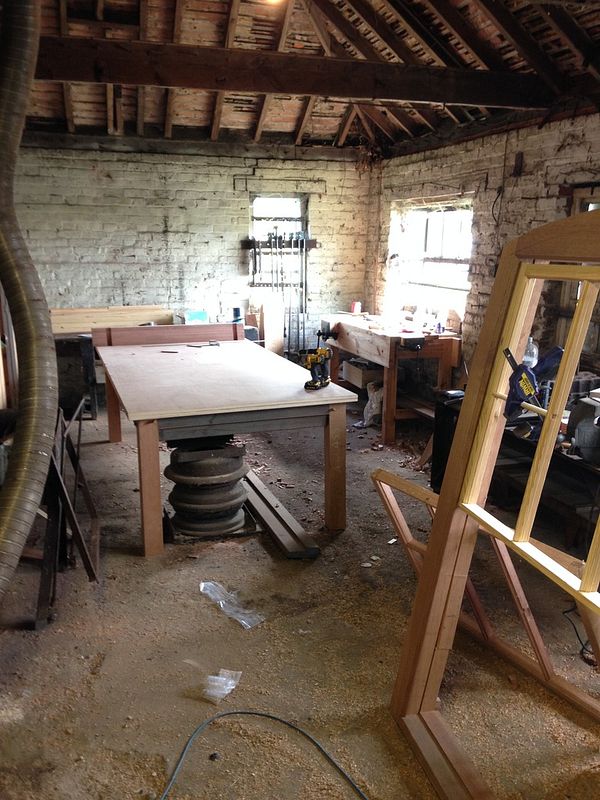Because of available space I'm looking to make an easy up easy down temporary assembly table to use as and when required.
I know the assembly table should be flat, the size I'm looking at is 7 ft x 7 ft. This would be large enough to support my roughly 6 ft square window frames.
I've seen Marc Spagnuolo's ( The Wood Whisperer ) torsion box assembly table top, made using ultralight MDF. A 4 x 8 x 18mm sheet I think would weigh around 30Kg so 2 of these and the mdf for the torsion grid starts to equal a lot of weight. There will be times I would have to move this on my own and store on its side, if storing on its side would be ok. Moving it by myself, as so heavy makes the torsion box a bit of a non starter.
To make up an assembly support for his torsion box he uses, a sort of temporary setup, see attached. Perhaps something along those lines?
Mr Spagnulolo goes on to say, the table doesn't need to be precision dead flat, as if prepared the timber sections correctly, they are pretty much self fitting.
Has anyone any ideas for putting together an easy up easy down temporary assembly table ?
Cheers,
I know the assembly table should be flat, the size I'm looking at is 7 ft x 7 ft. This would be large enough to support my roughly 6 ft square window frames.
I've seen Marc Spagnuolo's ( The Wood Whisperer ) torsion box assembly table top, made using ultralight MDF. A 4 x 8 x 18mm sheet I think would weigh around 30Kg so 2 of these and the mdf for the torsion grid starts to equal a lot of weight. There will be times I would have to move this on my own and store on its side, if storing on its side would be ok. Moving it by myself, as so heavy makes the torsion box a bit of a non starter.
To make up an assembly support for his torsion box he uses, a sort of temporary setup, see attached. Perhaps something along those lines?
Mr Spagnulolo goes on to say, the table doesn't need to be precision dead flat, as if prepared the timber sections correctly, they are pretty much self fitting.
Has anyone any ideas for putting together an easy up easy down temporary assembly table ?
Cheers,




































